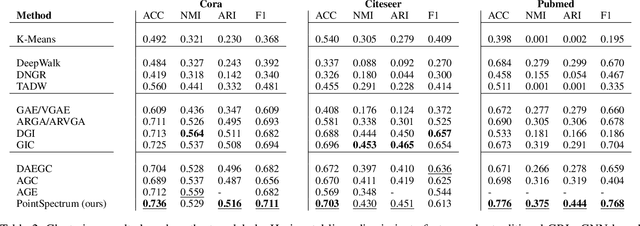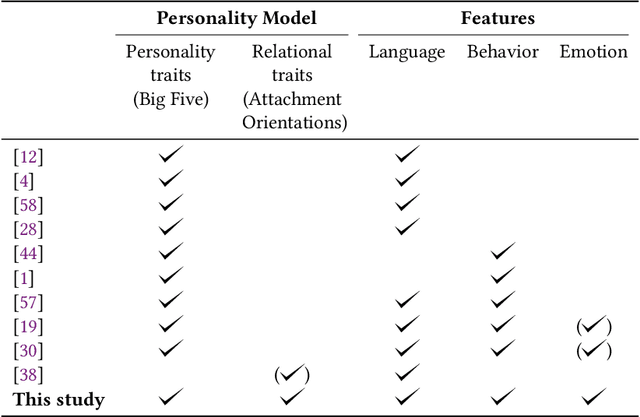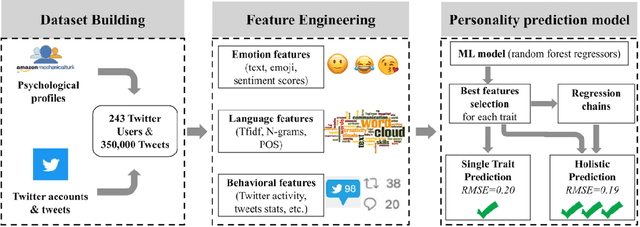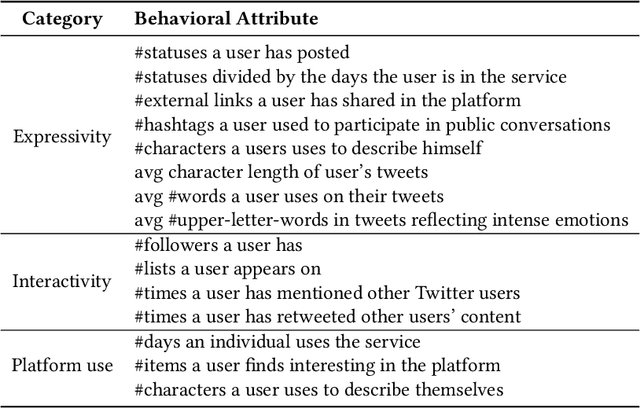Pavlos Sermpezis
AgoraSpeech: A multi-annotated comprehensive dataset of political discourse through the lens of humans and AI
Jan 09, 2025Abstract:Political discourse datasets are important for gaining political insights, analyzing communication strategies or social science phenomena. Although numerous political discourse corpora exist, comprehensive, high-quality, annotated datasets are scarce. This is largely due to the substantial manual effort, multidisciplinarity, and expertise required for the nuanced annotation of rhetorical strategies and ideological contexts. In this paper, we present AgoraSpeech, a meticulously curated, high-quality dataset of 171 political speeches from six parties during the Greek national elections in 2023. The dataset includes annotations (per paragraph) for six natural language processing (NLP) tasks: text classification, topic identification, sentiment analysis, named entity recognition, polarization and populism detection. A two-step annotation was employed, starting with ChatGPT-generated annotations and followed by exhaustive human-in-the-loop validation. The dataset was initially used in a case study to provide insights during the pre-election period. However, it has general applicability by serving as a rich source of information for political and social scientists, journalists, or data scientists, while it can be used for benchmarking and fine-tuning NLP and large language models (LLMs).
Towards Hybrid Intelligence in Journalism: Findings and Lessons Learnt from a Collaborative Analysis of Greek Political Rhetoric by ChatGPT and Humans
Oct 17, 2024



Abstract:This chapter introduces a research project titled "Analyzing the Political Discourse: A Collaboration Between Humans and Artificial Intelligence", which was initiated in preparation for Greece's 2023 general elections. The project focused on the analysis of political leaders' campaign speeches, employing Artificial Intelligence (AI), in conjunction with an interdisciplinary team comprising journalists, a political scientist, and data scientists. The chapter delves into various aspects of political discourse analysis, including sentiment analysis, polarization, populism, topic detection, and Named Entities Recognition (NER). This experimental study investigates the capabilities of large language model (LLMs), and in particular OpenAI's ChatGPT, for analyzing political speech, evaluates its strengths and weaknesses, and highlights the essential role of human oversight in using AI in journalism projects and potentially other societal sectors. The project stands as an innovative example of human-AI collaboration (known also as "hybrid intelligence") within the realm of digital humanities, offering valuable insights for future initiatives.
Uncovering Bias in Personal Informatics
Mar 27, 2023Abstract:Personal informatics (PI) systems, powered by smartphones and wearables, enable people to lead healthier lifestyles by providing meaningful and actionable insights that break down barriers between users and their health information. Today, such systems are used by billions of users for monitoring not only physical activity and sleep but also vital signs and women's and heart health, among others. %Despite their widespread usage, the processing of particularly sensitive personal data, and their proximity to domains known to be susceptible to bias, such as healthcare, bias in PI has not been investigated systematically. Despite their widespread usage, the processing of sensitive PI data may suffer from biases, which may entail practical and ethical implications. In this work, we present the first comprehensive empirical and analytical study of bias in PI systems, including biases in raw data and in the entire machine learning life cycle. We use the most detailed framework to date for exploring the different sources of bias and find that biases exist both in the data generation and the model learning and implementation streams. According to our results, the most affected minority groups are users with health issues, such as diabetes, joint issues, and hypertension, and female users, whose data biases are propagated or even amplified by learning models, while intersectional biases can also be observed.
Pointspectrum: Equivariance Meets Laplacian Filtering for Graph Representation Learning
Sep 07, 2021



Abstract:Graph Representation Learning (GRL) has become essential for modern graph data mining and learning tasks. GRL aims to capture the graph's structural information and exploit it in combination with node and edge attributes to compute low-dimensional representations. While Graph Neural Networks (GNNs) have been used in state-of-the-art GRL architectures, they have been shown to suffer from over smoothing when many GNN layers need to be stacked. In a different GRL approach, spectral methods based on graph filtering have emerged addressing over smoothing; however, up to now, they employ traditional neural networks that cannot efficiently exploit the structure of graph data. Motivated by this, we propose PointSpectrum, a spectral method that incorporates a set equivariant network to account for a graph's structure. PointSpectrum enhances the efficiency and expressiveness of spectral methods, while it outperforms or competes with state-of-the-art GRL methods. Overall, PointSpectrum addresses over smoothing by employing a graph filter and captures a graph's structure through set equivariance, lying on the intersection of GNNs and spectral methods. Our findings are promising for the benefits and applicability of this architectural shift for spectral methods and GRL.
My tweets bring all the traits to the yard: Predicting personality and relational traits in Online Social Networks
Sep 22, 2020



Abstract:Users in Online Social Networks (OSN) leaves traces that reflect their personality characteristics. The study of these traces is important for a number of fields, such as a social science, psychology, OSN, marketing, and others. Despite a marked increase on research in personality prediction on based on online behavior the focus has been heavily on individual personality traits largely neglecting relational facets of personality. This study aims to address this gap by providing a prediction model for a holistic personality profiling in OSNs that included socio-relational traits (attachment orientations) in combination with standard personality traits. Specifically, we first designed a feature engineering methodology that extracts a wide range of features (accounting for behavior, language, and emotions) from OSN accounts of users. Then, we designed a machine learning model that predicts scores for the psychological traits of the users based on the extracted features. The proposed model architecture is inspired by characteristics embedded in psychological theory, i.e, utilizing interrelations among personality facets, and leads to increased accuracy in comparison with the state of the art approaches. To demonstrate the usefulness of this approach, we applied our model to two datasets, one of random OSN users and one of organizational leaders, and compared their psychological profiles. Our findings demonstrate that the two groups can be clearly separated by only using their psychological profiles, which opens a promising direction for future research on OSN user characterization and classification.
 Add to Chrome
Add to Chrome Add to Firefox
Add to Firefox Add to Edge
Add to Edge